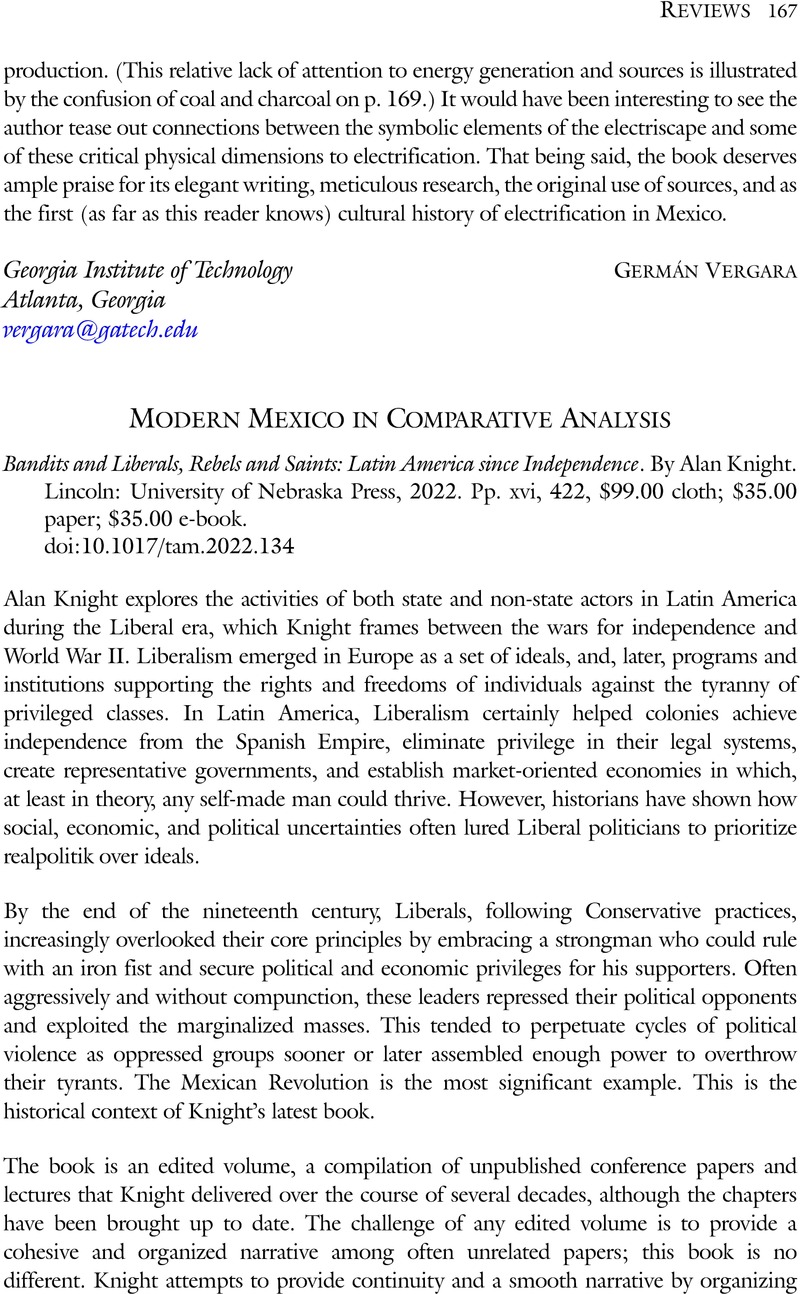No CrossRef data available.
Article contents
Modern Mexico in Comparative Analysis - Bandits and Liberals, Rebels and Saints: Latin America since Independence. By Alan Knight. Lincoln: University of Nebraska Press, 2022. Pp. xvi, 422, $99.00 cloth; $35.00 paper; $35.00 e-book.
Review products
Bandits and Liberals, Rebels and Saints: Latin America since Independence. By Alan Knight. Lincoln: University of Nebraska Press, 2022. Pp. xvi, 422, $99.00 cloth; $35.00 paper; $35.00 e-book.
Published online by Cambridge University Press: 10 February 2023
Abstract
An abstract is not available for this content so a preview has been provided. Please use the Get access link above for information on how to access this content.

- Type
- Book Review
- Information
- Copyright
- Copyright © The Author(s), 2023. Published by Cambridge University Press on behalf of Academy of American Franciscan History


